Business
Popular South African based Prophet, Samuel Akinbodunse begins Isreal Tour with church members
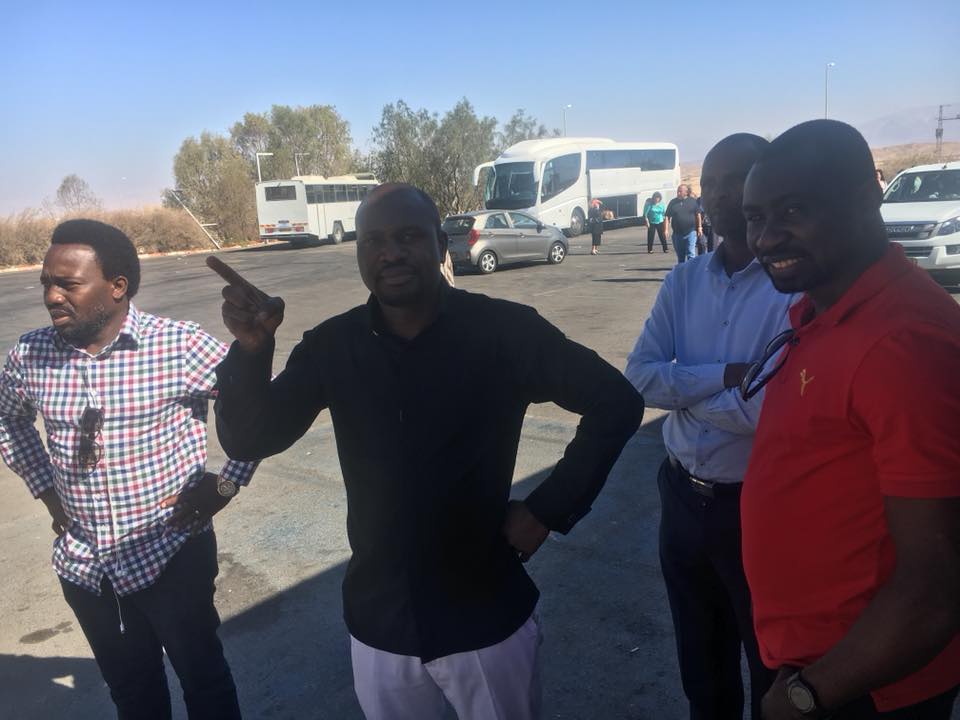
Popular South-African based Nigerian Prophet, Samuel Akinbodunse has just begun a tour to the Holy land, Israel and will be visiting some topical places in the land with his team. Presently, he is on his way to visit the Red Sea also with his team and we will be giving a report of it all in pictures as it unfolds.
Propeht Samuel Akinbodunse is one distinguished Prophet who is highly respected and revered due to his accurate prophecies, Miracles that has taken place through him, deliverance and many more.
Few days ago, it would be recalled that he delivered a woman tormented by the spirit of her grandmother who wants to kill her in order to live long. It was noted that ‘Snakes’ were crawling out of her after the deliverance. it was a never seen before miracle for the woman as she confessed not to have been delivered of the spirit before and that Prophet Samuel Akinbodunse will be the first to deliver her
Business
NNPCL and Corruption’s Final Throes

NNPCL and Corruption’s Final Throes
By Pius Olasanmi
In the twilight of the Obasanjo administration, when Nigerians were still capable of being outraged, when Turn Around Maintenance (TAM) of refineries was a buzzword that still held some mysticism to bamboozle citizens, during a conversation, a certain man said something profound. The man said, “As a businessman, if I were the owner of these refineries, knowing that they are three decades old, I would take the last money I have, hire bulldozers, raze them to the ground, and obtain loans to build new ones.”
When we pressed him further on why he would engage in such waste, he explained that repairing the refineries is the real waste. He explained that even if the TAM were honestly carried out, a thirty-year-old refinery would never compete favourably with a new one that would integrate contemporary technology. Operating at its best, such a refinery would never be comparatively more efficient. It is therefore pointless to have spent another one naira on the refineries at that point.
A few months later, I had a conversation with a then-lawmaker on an entirely different matter. I mentioned that the National Assembly has failed by not crafting legislation that would criminalise and punish public office holders who foist wrong decisions on the country. The logic: a public office holder need not steal to be punished, wrong decisions should attract penalties for an office holder who opts for the worst of all options when there are less injurious ones.
These established premises speak to the ongoing nauseating efforts at revisionism by those who wrecked the Nigerian National Petroleum Company Limited (NNPCL) and its previous iteration, the Nigerian National Petroleum Corporation (NNPC). Notably, this campaign to rewrite history is traceable to Engineer Mele Kolo Kyari, the disgraced immediate past Chief Executive Officer of NNPCL and his hirelings. They have suffocated the news and the public opinion space with even more lies than they spun while in office.
The Saint Kyari campaign is anchored on convincing Nigerians that the Port Harcourt, Warri and Kaduna Refineries were fully functional when he was booted out of office. So brazen is the campaign that one of its talking heads challenged the group chief executive officer (GCEO), Engr. Bayo Ojulari, to “inform Nigerians categorically what happened to the functioning refineries he inherited from his predecessor, Engr. Mele Kyari.” The effrontery.
We have not forgotten so soon the charade that followed the baffling claim that Nigeria has spent $2.8 billion on the repair of the refineries, while they are not churning out even a single litre of refined product among them. Saint Kyari and his goons played all manner of tricks, all of which embarrassed President Bola Tinubu, who had counted on ticking off the return to productivity of the refineries as part of his achievements, only to realise that he was deceived into celebrating phantoms. Tragic.
Lest we forget, 200 trucks were arranged as props in a well-directed video clip to celebrate the re-streaming of the Port Harcourt Refinery. The disappointment. Nigerians were to learn from several reports that the Port Harcourt refinery was not producing and was instead using old, stored petroleum products to load trucks. Worse still, the Kyari crew was passing off sanction-tainted Russian-sourced crude oil refined in Malta as locally refined products. More insult was piled on the assault on our collective sensibility with the lies that the Port Harcourt Refinery exported semi-finished products. Brazen.
Meanwhile, Kyari and his hirelings called those who pointed out or protested these glaring scams all manner of names. They hid behind industry technicalities and jargon to create the impression that those of us who knew Nigerians were being robbed did not understand what we were saying. The point remains that a $2.8 billion investment can potentially build a refinery with a capacity of around 100,000 barrels per day (bpd). Of course, the actual capacity of such a refinery will depend on various factors, including the complexity of the refinery, the technology used, and the location. That is the amount that Kyari’s regime at the NNPCL took and did not give Nigerians refined products.
Fast forward to Kyari’s sack and the appointment of Engineer Bayo Ojulari, who has demonstrated that things can indeed be done differently. Kyari’s exit was expectedly followed by the Economic and Financial Crimes Commission (EFCC) going after him and his associates. The extent of the theft is better understood against the backdrop of N80 billion being found in the bank account of one of his associates. They went on the run.
Perhaps because the EFCC was biding its time on securing international warrants for the arrests of these characters on the lam, they have become emboldened. They have decided to fight back and rewrite the story of their participation in the greatest fraud against Nigerians. Engineer Ojulari’s renewed mindset, which is entrenching a semblance of the transparency Nigerians demand, became their natural target. The demons that once roamed around the corporation came out with malevolence. They started spinning stories of corruption to tarnish the incumbent who refused to hide their crimes. The objective: bring Ojulari down. But alas, he is winning the war as it stands.
His innocence is proven, and it is glaring that those who want him out are mere charlatans who can no longer ply their corrupt wares because of the impact of the new reforms. Corruption in the NNPCL is in its final throes. The fake news being unleashed against the incumbent leadership is akin to corruption’s last kicks as reforms in the sector strangulate it and its practitioners. The reforms must take place in the NNPCL, whether the industry demons like it or not.
As a parting shot, Kyari and his associates would do well to prepare their defence. In addition to accounting for the $2.8 billion they laundered in the name of repairing the moribund refineries, they must also answer for the poor decision to fix that which is irretrievably broken. Awarding contracts for Turn Around Maintenance of 59-year-old refineries that a right-thinking person had suggested should be demolished almost twenty years ago, when they were only 30 years old, is criminal. Trying to deceive Nigerians that the fake repairs worked is treason.
Olasanmi is a public affairs analyst writing from Lagos.
Business
GRANDIS 5STAR LUXURY APARTMENT & SUITES SET TO REDEFINE LIVING IN VICTORIA ISLAND

GRANDIS 5STAR LUXURY APARTMENT & SUITES SET TO REDEFINE LIVING IN VICTORIA ISLAND
Set to Rise elegantly against the Lagos skyline, is the Grandis 5Star Luxury Apartment & Suites. According to Adejuwon Ademola, The General Manager of the Development company, it is more than just a residential building
“it’s a lifestyle statement. Standing 17 floors high in the heart of Victoria Island, this revolutionary masterpiece of modern architecture will offer a panoramic 360° view of Eko Atlantic, Victoria Island, and Ikoyi, transforming every apartment into an exclusive penthouse experience for the world’s most discerning elite.”

Developed by Dumarco Construction Limited, a globally acclaimed company with decades of delivering complex, high-value projects in the highly regulated petroleum, oil, and gas industries, Grandis 5Star brings unmatched international safety standards, uncompromising quality, and timeless elegance into Nigeria’s luxury property market.
> “When you live in Grandis, you’re not just buying a home—you’re investing in peace of mind, world-class safety, and an effortless luxury experience that will remain pristine for decades,” says Adejuwon A. Ademola, General Manager of Dumarco Construction Limited.
The Gold Standard in Safety and Quality
Dumarco’s roots in the oil and gas sector mean the company operates to some of the strictest safety protocols in the world. Every stage—from conceptualization, design, construction, to long-term maintenance—follows internationally accepted procedures and quality assurance measures. Cutting corners is simply not in Dumarco’s vocabulary.
> “In the oil and gas industry, there’s no room for compromise. We’ve brought that same discipline and zero-tolerance for mediocrity into property development,” says Ademola. “That’s why Grandis will be one of the safest and most enduring residential developments in Nigeria.”
To ensure transparency and prevent (project complacency), Dumarco deliberately separates the developer, contractor, and consultant roles, engaging only the most competent professionals in each respective field. Dumarco’s project team includes globally recognized contractors such as Julius Berger, Cappa & D’Alberto, and Elalan, Migliore Construczione & Tecniche (MC&T) and their partners VENCO IMTIAZ CONTRACTING COMPANY (VICC) based in Dubai, UAE, Business Contracting Limited, alongside leading consultants like Morgan Omanitan & Abe, LAMBERT, and James Cubitt.
Grandis – Investments, appreciation, returns and profitability
Our selection process for the location of the project alone was pains-taking and completely thorough scientific process. Top professional companies were employed to conduct a scientific data acquisition and analytical survey of the entire Victoria Island, Ikoyi, Lekki and Eko Atlantic before a project site is selected. Analyzing and acquiring areas developmental charts and trends, studying and gathering historical and present sale prices, rental charge and occupancy rates over a 50 year period from every individual street before the selection of the location of any of our developments especially true for the Grandis Project
He adds,
“Our clients and residents can be rest assured that the location of Grandis has been scientifically proven through all existing data to provide our clients with a 100% occupancy rate, highest developmental location, highest rental income and investment returns. ”
The Grandis Experience
Located minutes away from international corporate headquarters, embassies, and landmarks such as Eko Hotel, Radisson Blu, and the Radisson Red, Grandis offers unmatched convenience for professionals, diplomats, and high-net-worth individuals. Every residence is designed for both indulgence and efficiency, with high-grade finishes, smart-home systems, and private amenities that ensure seamless living.
From sunrise over the Atlantic to the glittering Lagos night skyline, residents will enjoy uninterrupted luxury, supported by discreet and highly trained staff, advanced security systems, and a design that prioritizes comfort and privacy.
> “We designed Grandis for people who want everything—security, elegance, convenience, and the assurance that their home will look as spectacular in 20 years as it does on day one,” Ademola notes.
A Legacy That Lasts
With its combination of visionary architecture, peerless safety, and meticulous maintenance planning, Grandis is built to remain iconic for generations. Thanks to Dumarco’s meticulous approach, the building’s service charges are expected to remain low while its value and appeal continue to appreciate over time.
In a market often marred by shortcuts and substandard practices, Mr Ademola says
Grandis stands as a beacon of what luxury living should be—safe, spectacular, and built to last.
“Grandis 5Star Luxury Apartment & Suites — Where safety meets sophistication, and every detail is designed for a life well-lived.”
He added
Website -www.dumarcoltd.com
Project website – www.26idowutaylor.com
Email [email protected]
Tel / WhatsApp +234 9077777883
GM – Adejuwon A. Ademola
celebrity radar - gossips
Nationwide Talent, One Broadcaster: Tinubu Picks Pedro, Bello, Din, Mohammed to Lead NTA
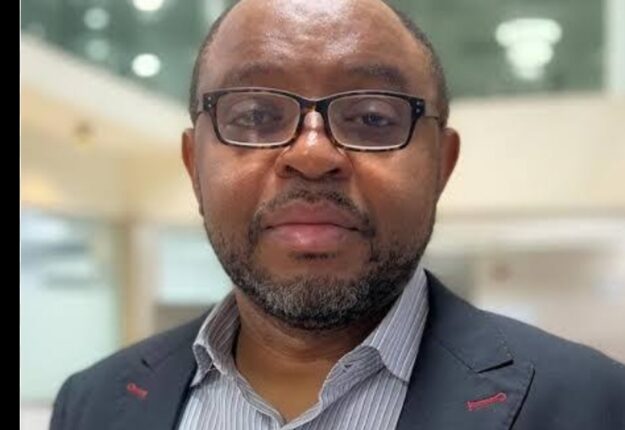
Tinubu Overhauls NTA Leadership: Media Powerhouse Rotimi Pedro Takes Helm as DG
President Bola Ahmed Tinubu has announced a major shake-up at the Nigerian Television Authority (NTA), appointing renowned media executive Rotimi Richard Pedro as the new Director-General in a move widely seen as a bold step toward modernising the state broadcaster.
Pedro, a Lagos native, brings nearly 30 years of expertise in broadcasting, sports rights, and marketing communications across Africa, the UK, and the Middle East. A trained entertainment and intellectual property lawyer, he also holds an MSc in Investment Management and Finance from City University Business School, London.
In 1995, Pedro founded Optima Sports Management International (OSMI), which rose to become one of Africa’s leading sports content providers—distributing premium events such as the English Premier League, UEFA Champions League, FIFA World Cup, and CAF competitions to audiences in over 40 countries.
His career highlights include top roles at Bloomberg Television Africa and Rapid Blue Format, as well as advisory work for FIFA, UEFA, Fremantle Media, and the African Union of Broadcasters (AUB). At the AUB, he was instrumental in securing exclusive pan-African free-to-air media rights for all CAF competitions.
Alongside Pedro’s appointment, Tinubu named Karimah Bello from Katsina State as Executive Director of Marketing, Stella Din from Plateau State as Executive Director of News, and Sophia Issa Mohammed from Adamawa State as Managing Director of NTA Enterprises Limited.
Industry insiders credit Pedro with building commercially viable broadcast platforms, driving sponsorship growth, and delivering world-class content to African audiences. His appointment marks one of the most significant leadership changes at NTA in years—signalling the government’s intent to strengthen the broadcaster’s competitiveness in a fast-evolving media landscape.
-
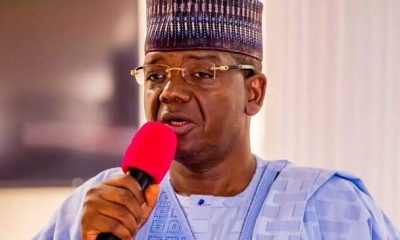
 society5 months ago
society5 months agoRamadan Relief: Matawalle Distributes Over ₦1 Billion to Support 2.5 Million Zamfara Residents
-
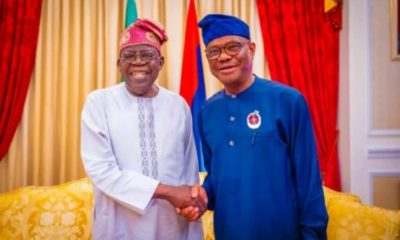
 Politics2 months ago
Politics2 months agoNigeria Is Not His Estate: Wike’s 2,000‑Hectare Scandal Must Shake Us Awake
-
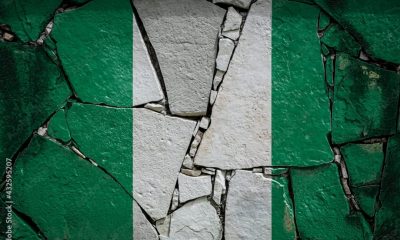
 society4 months ago
society4 months agoBroken Promises and Broken Backs: The ₦70,000 Minimum Wage Law and the Betrayal of Nigerian Workers
-

 society3 months ago
society3 months agoOGUN INVESTS OVER ₦2.25 BILLION TO BOOST AQUACULTURE










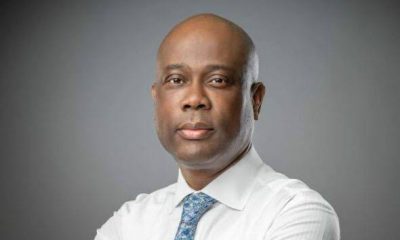

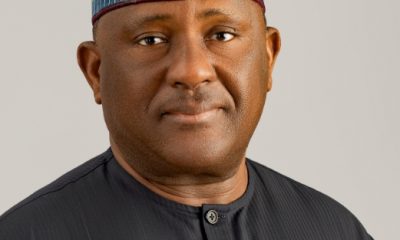




You must be logged in to post a comment Login